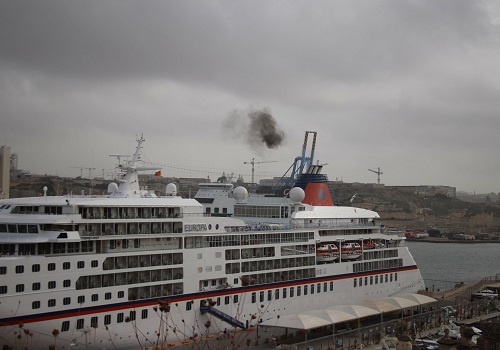BirdLife Malta welcomes the official implementation of the Sulphur Emission Control Area (SECA) in the Mediterranean Sea, which enters into force today, 1st May 2025. This marks a vital step towards cleaner air across the region and brings much-needed relief to Maltese coastal communities living in or near port areas.
What is SECA?
SECA stands for Sulphur Emission Control Area. It is a regulatory designation that imposes stricter limits on the sulphur content of fuels used by vessels operating within the Mediterranean. This measure is a key milestone in protecting human health and the environment. Compliance with SECA requirements will be monitored by the competent authorities of the Mediterranean coastal states and non-compliance will result in penalties.
What is SOx and why is it harmful?
Sulphur oxides (SOx), particularly sulphur dioxide (SO₂), irritate the respiratory system—especially during physical activity—and can worsen asthma and heart conditions in sensitive individuals such as children and the elderly. SO₂ can also react with other air pollutants to form fine particles (PM2.5) that penetrate deep into the lungs, causing similar health effects. The designation of the Mediterranean SECA is expected to reduce SOx emissions by almost 80% and PM2.5 emissions by about 25%, delivering significant benefits for human health and the environment.
New sulphur limits
From 1st May 2025, ships operating in the Mediterranean SECA must use fuel with a maximum sulphur content of 0.10%, down from the current 0.50%. Analyses conducted by the International Maritime Organization (IMO) and the European Commission suggest this reduction will prevent at least 1,000 premature deaths and 2,000 new cases of childhood asthma each year in the Mediterranean basin.

Malta’s position and relevance
Malta, which has the largest shipping register in the European Union, is particularly impacted by this regulation. Strategically located along a critical East–West maritime trade route, vessels transiting between Gibraltar and the Suez Canal often pass close to Malta, particularly through its north-western maritime corridor. The SECA decision will affect hundreds of these ships, requiring them to burn cleaner fuel as they pass near Maltese waters. This includes commercial vessels that call at the Malta Freeport as well as cruise liners docking at the Grand Harbour, further underscoring the island’s role as a key maritime hub in the central Mediterranean.
BirdLife Malta’s role and next steps
Since 2016, BirdLife Malta has campaigned for this measure as part of the Together Against Air Pollution from Ships initiative, in collaboration with German BirdLife partner NABU and other Mediterranean organisations. This campaign has focused on awareness-raising and stakeholder engagement.
Building on this success, BirdLife Malta and its partners are now advocating for the establishment of a Nitrogen Oxide Emission Control Area (NECA) through a new initiative: “Tackling Emissions from International and Domestic Shipping in Europe.” This will address NOx emissions, which are not currently included in the Mediterranean ECA, unlike the Baltic and North Sea ECAs.
NOx pollutants contribute to summer smog and pose serious health risks. Measurements taken in 2024 by NABU and partners in Mediterranean port cities showed that 24% of the ports (e.g. in Italy, Spain, and Greece) exceed the EU’s legal annual limit for nitrogen dioxide. Alarmingly, 97% of the measurements exceeded the WHO guideline value, with some locations recording levels more than double the EU annual limit.
These findings highlight the urgent need for stricter regulation for ship nitrogen dioxide emission – simply to comply with existing EU limits. Establishing a Nitrogen Oxide Emission Control Area (NECA) represents a clear and necessary step which needs to be undertaken in the near future.
Read REMPEC’s information leaflet on SECA here.
Read our press release in Maltese here.
